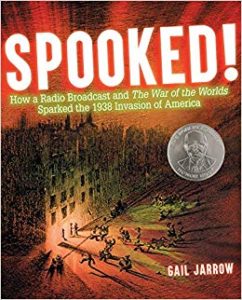Radius Books
A couple of times a year, we receive a box of free art books from Radius Books, a nonprofit publisher based out of Sante Fe, New Mexico, that aspires “to make a lasting impact through [their] Publishing and Donation programs.” Founded in 2007, Radius Books has published over 150 titles and donated – gifted, rather, as they say on their website – over 75,000 books to “libraries, schools, and arts programs in all 50 states.” Thanks to their generosity, we’re fortunate enough to have a small, though growing, collection of Radius Books in our library’s Post Reading Room.
Books by the same publisher tend to become formulaic, with look-alike layouts, consistent components, matching materials, and similar sizes and styles, even if and when they are not part of a series. Which, admittedly, is fine for most books, but for art books? …Radius Books are unique, wonderfully well-thought out, and beautiful. Although visual artwork is the mainstay, cultural, historical, informational, and social content is woven into the fabric of many of Radius’ titles and, when done, is done so in a manner that complements the visual artwork. What’s more, their offerings are diverse. Not only as diversity relates to art forms and mediums, but as it relates to the representation of a range of people. Time and again the result is stunning.
Perhaps I’ve only just now realized the challenge of relaying the uniqueness and beauty of these books to you. But I’ll do my best by discussing a few of the 35+ Radius Books that we have in our collection.
Masumi Hayashi: Panoramic Photo Collages, 1976-2006 does, in fact, take the shape of a panoramic photograph. Beginning with an essay penned by Barbara Tannenbaum, in which she describes Hayashi as using “art to awaken people gently but insistently to societal ills,” the book then moves into six sections of vivid, sometimes surreal, plates: Post-Industrial Landscapes; EPA Superfund Sites; Abandoned Prisons; Cities; Japanese American & Canadian Internment Camps; and Sacred Architectures. In this work, Hayashi creates individual panoramic photo collages by combining hundreds of still photos. Some of the already rectangular-shaped plates (i.e. pages) fold out into even larger panoramic collages.
Remnants: Photographs of the Lower East Side is a collection of photographs by Janet Russek & David Scheinbaum that documents the vibrant, yet vanishing, Jewish heritage of Manhattan’s Lower East Side, which Amy Stein-Milford refers to as “a place of origin, a Plymouth Rock, the neighborhood where it all started” for many American Jews. Stein-Milford goes on to write that today, “that history is imperiled.” Publications such as this help to preserve that heritage. One of the many interesting stories within this book is one about Joel Russ. In 1907, he immigrated from what is now Poland and sold herring out of a barrel until, in 1914, he could build a brick and mortar store. In 1933, he renamed his business “Russ & Daughters,” making his daughters business partners. This is known as the first business in the United State with “& Daughters” in its name–quite a controversy at the time!
Interwoven is one of the most intriguing art books that I’ve come across, full stop. This title features the work of Kyle Meyer, an American Artist who spent extended periods of time in Swaziland, and raises awareness about the “hostility and brutal discrimination” faced by members of Eswatini LGBTQI community. In the book’s foreword, Todd J. Tubutis describes how Meyer makes his work: he “hand-shreds each photographic print and weaves it together with strips of fabric worn by the sitter, creating a series of larger-than-life portraits that are both flat and dimensional, both digital and handmade.” Meyer’s work is brilliant. Throughout the book are transcriptions of hand-written notes. Also, the book incorporates pages of fabric reproductions of the actual fabric woven into the works of art depicted in the plates.
The aforementioned titles focus on photography, or photography-related artworks, because that is a particular interest of mine. Our Radius Books collection does, however, include books about other art forms and mediums, such as the sculpture work of artist John McCracken, the recycled and embroidered textiles of Bengal in Kantha, the drawings of Linn Meyers, and much more.
Our Radius Books collection is an incredible resource for anyone and everyone interested in visual art. We are thankful to be on their mailing list and that their organization does the work that they do to amplify voices while making art more accessible. Although these books cannot be checked out, they are available for your in-house use and make for great fireside companions. So as the days get colder and winter approaches, I encourage you to carve out some time to visit the library’s Post Reading Room, peruse our Radius Books collection, and choose a few titles to enjoy by the fireside. As always, happy reading.
Find Masumi Hayashi:Panoramic Photo Collages, 1976-2006 in catalog.
Find Remnants: Photographs of the Lower East Side in catalog.





